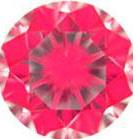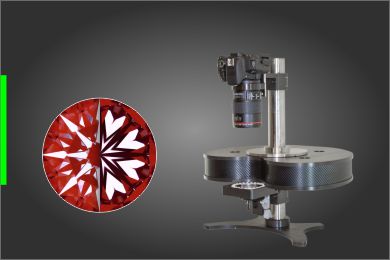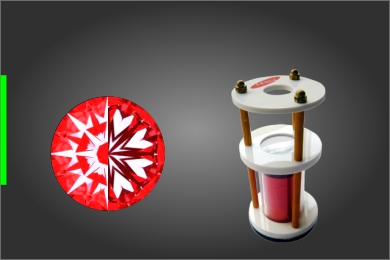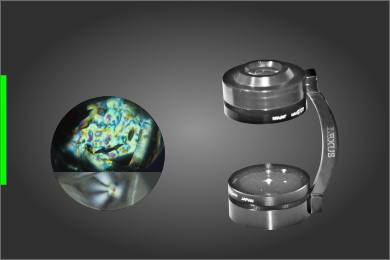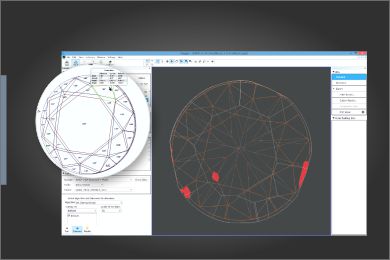Ideal Scope
Home Grading & Branding Ideal Scope
The diamonds are unique due to their breath taking brilliance, fire and scintillating performance. The value of the diamond depends on 4Cs, namely Carat, Color, Clarity and Cut. When it comes to Clarity and Cut, the certificate do not speak a lot. The diamond’s value greatly depends on the way it performs for the buyer. But not much information is available to display it in a way a consumer will appreciate.
The Ideal-scope is based on a principle discovered by Mr. Okuda in the 1970’s. A 10x lens with a hot red / pink reflector in front of the diamond has a central viewing hole, which allows you to see just how much of the red / pink light refracts back from the diamond.
The instrument is a simple brilliance gauge; white areas in a diamond show light transmitted from behind the diamond; often called leakage - the enemy! The blackness of the lens mimics an observer's head blocking out the light. The most brilliant diamonds look bright pink/red with a black star and minimal white or pale areas. Most ideal cuts have small ‘V’ shaped white leakage features at the girdle.
Invented originally for brilliance assessment, the ideal-scope shows a diamonds symmetry. Diamonds with perfect symmetry and good proportions show a black eight-pointed star. Hearts and Arrows (and H&A’s viewers) are a by-product of Mr. Okuda’s discovery.
In December 2001 the American Gem Society (AGS) announced it will work with Fire scope™ owner Richard von Sternberg to develop a new diamond cut grading system. “We strongly believe that a quantifiable cut grade for fancy shaped diamonds is now within reach,” said Robert W. Bridel, AGS executive director and CEO”.

Look for areas of white. Find any? No? That is because this stone is returning near to 100% of the light that is entering it. The red and black coloration is even and strong, indicating excellent light return. The black star like pattern also indicates very high optical symmetry (near to perfect arrows). An even spread of black and red indicates good scintillation.

Any areas of white or pale pink. Yes & Yes. An even coloration of pink? No. This stone is leaking light around the table of the stone and also around the outer edge. This leakage is causing the white and pale pink areas to appear in the stone. This light leakage is too much to overlook.

